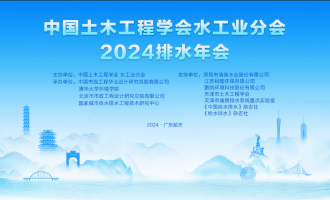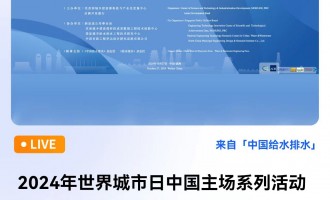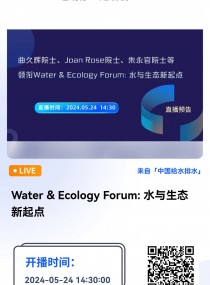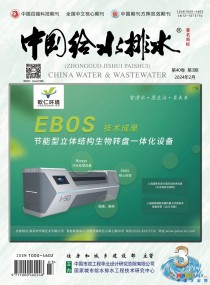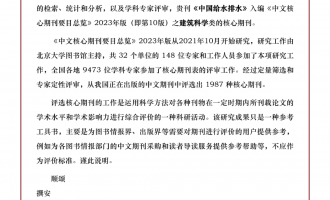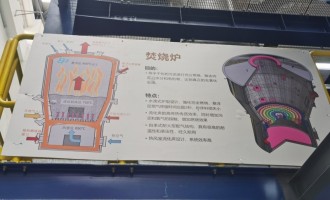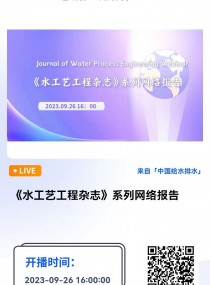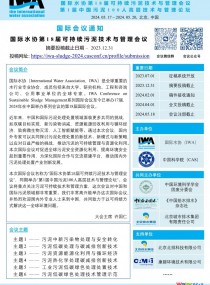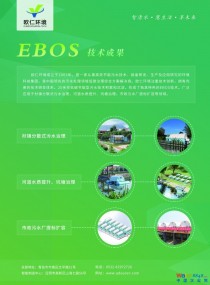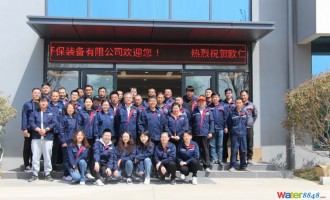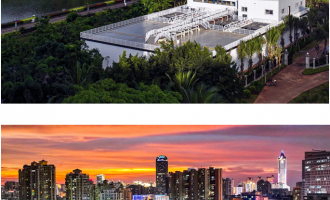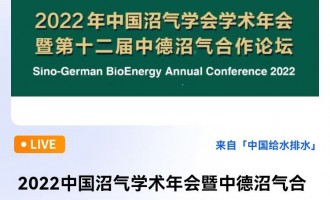美国著名Carollo 环境工程公司专家Rod Reardon 展望:污水处理当前及未来发展趋势
The wastewater industry faces many new challenges that complicate near- and long-term planning decisions. Increasing energy costs, trace organic compounds, finite resources, water conservation, and inexorably more stringent regulations, must all be considered before investing in major facility improvements. While the future is never certain, inclusion of strategic exercises like scenario planning and future mapping during the planning process can help to define the boundaries of what the future might bring to treatment facilities.
Futurists point out that the important trends in the future have their seeds in the present. On this basis, treatment technologies will evolve to address five major trends in wastewater treatment:
未来污水处理发展的五个趋势:
1) nutrient removal and recovery,
营养盐去除剂回收技术
2) trace organic compounds,
微量有机污染物;
3) energy conservation and production,
能量转换和产生
4) sustainability, and
可持续性
5) community engagement.
公众参与
The water industry has historically taken far longer than other business sectors to develop and implement new technologies. However, many innovations are now under development with benefits that could be compelling enough to shorten the length of the technology life cycle in the water sector. Implementation of these technologies would radically alter wastewater treatment plants in the future.
Current trends and highlights of some of today’s technical innovations, including nutrient removal and recovery, fine sieves, nitritation- Anammox processes, anaerobic treatment, sludge pre-treatment, and thermal conversions, are discussed.
Background
Speculation on the future of wastewater treatment continues to be a recurring theme in the water industry. Predictably, the future will be shaped by events that cannot be predicted and that will influence the future in ways that are impossible to foresee. However, studying the trends and forces shaping current events, and using this knowledge to develop possible boundaries for future conditions, can result in better insights into what might occur.
Strategic Planning
When the future is assumed to be like the past, forecasts can be made by simple, linear extrapolations. However, with greater degrees of uncertainty that conditions will continue as they are, forecasting becomes less useful. One structured method for evaluating these uncertainties is known as scenario planning, scenario thinking, or scenario analysis. With scenario planning, flexible plans for the future are prepared by evaluating alternative scenarios that could exist in the future. Future mapping is a more visually-based variation on scenario planning that attempts to examine a range of possible futures. Neither process attempts to predict the future, but rather develops an understanding of the forces and their relationships that could shape future conditions.
By creating several plausible, but distinctly different sets of future conditions, an organization can test the viability of current strategies under new circumstances. Ultimately, the goal is to be able to make better planning decisions that provide the flexibility to adapt to future changes.
Global Trends
Current trends (patterns of gradual change) often become the starting point for assessments of possible future conditions. Progressive changes in aspects of our society, businesses, and environment can be discerned and used to foresee the ultimate results of these changes over time. Past experience shows that most significant trends derive from underlying socio-cultural, economical, political, technical, ecological, demographic, organizational, and risk factors. Trends occur at all levels, with The largest, global changes affecting nearly everything, while localized trends will only affect specific regions, locations, or industries.
Key global trends with implications for the water industry include changes in population and demographics, increased urbanization, increasing living standards, climate change, and a scarcity of resources needed to sustain life, including land, water, and phosphorus. Regardless of the scale, utilities can benefit by being aware of the forces at work, and by being prepared to adapt to opportunities and threats that could significantly affect them.
A number of individuals and organizations have explored trends in the water industry including the Water Environment Research Foundation, or WERF (Crawford, G., 2010; Henderson, D., 2011), STOWA, the Dutch acronym for Stichting Toegepast Onderzoek Waterbeheer or Foundation for Applied Water Research (2010), the Water Research Foundation (Means, E.G., III et al., 2006), and the European Commission (Segrave, A. et al., 2007; Zuleeg, S. et al., 2006; and Rosén, L. and Lindhe–Chalmers, A., 2007). These different groups have expressed widely divergent views, as evidenced by the summary of selected studies in Table 1, although there is some commonality. Even though many of these studies were done within the context of potable water supplies, most of the identified trends apply equally to wastewater.
Wastewater Trends
From the perspective of the wastewater industry, five major trends, that encompass some of those in Table 1, are evident. These include nutrient removal and recovery, energy conservation and production, sustainability, treatment for non-traditional contaminants, and community engagement.
Nutrient Removal and Recovery – Nutrient removal to reduce nitrogen and phosphorous has been a reality in central Florida since the 1980s. In the future, nearly all treatment facilities will provide some nutrient reduction. Much of the near-term focus will be on meeting lower numeric limits; however, recovery and reuse of materials, initially phosphorus, will likely become mandatory at larger facilities over time. Taking a tiered approach to nutrient limits is likely the best long-term strategy, because the tiers allow flexibility to tailor effluent quality to a variety of reuse applications, thus providing the ability to maximize reuse while minimizing costs. One advantage to lower nutrient effluent limits is that treatment to meet lower effluent limits concentrates nutrients in the solids, where it may be more economical to recover and reuse Energy Management – Rising energy costs paired with restrictions on greenhouse gases will provide the impetus to institute more effective energy management and alternative energy strategies. These trends are raising the bar for wastewater utilities toward being energy neutral or energy positive, whereby energy is not just managed, but instead recovered and reused. Current initiatives to increase biogas production, manage oxygen demand, and control equipment for efficient power use will move the industry in the right direction. A fundamental change in the use of aerobic biological treatment may be required to complete the transition from energy user to energy supplier.
Future treatment plants may incorporate additional anaerobic processes, or chemical and physical barriers, to remove pollutants without aerobic bacteria thus creating energy rather than using energy. However, there are limits to the ability to increase the energy efficiency of existing processes, and there are budgetary limits for implementing new processes and technologies that help achieve an energy neutral target. A prudent strategy dictates that utilities work to achieve the energy neutral goal incrementally.
Toward that end, there are five key components that can frame energy optimization strategies including:
1) maximize efficiency;
2) provide more treatment for less power;
3) consider technologies to reduce or produce energy;
4) generate renewable power; and
5) evaluate the plant carbon footprint.
Sustainability – Better management of natural, human, social, manufactured, and intellectual capital to maintain a sustainable existence will become essential in the future. At wastewater treatment facilities, this will mean reduced consumption of resources and increased recycling and reuse of water, nutrients, and other materials contained in wastewater. In some areas, the need to increase reuse will require some decentralization with construction of satellite treatment plants. Caps on greenhouse gas emissions will affect the selection of treatment technologies and operating strategies particularly for sludge. Increased water conservation will alter both the flows and pollutant concentrations in raw wastewater, potentially leading to new challenges and opportunities.
Treatment for Non-Traditional Constituents – Public concerns over the presence of trace organic chemicals in water will accelerate the application of advanced treatment technologies to remove objectionable compounds from wastewater. Although there is reasonable certainty that removal of trace organic compounds will be needed, the timing, the specific compounds or classes of compounds that will require removal, and the technologies that will be needed, are unknown. Planning strategies might include leaving space on the plant site and in the hydraulic profile based on the technologies that we now know can remove some trace organics, including advanced oxidation processes and biological nutrient removal.
Community Engagement – The current trend for increased stakeholder involvement in utility decisions that affect neighbors of wastewater facilities or the cost of service should continue. Utilities can expect that their communities will demand to be part of the planning process for facility improvements, and that community enhancements be incorporated into utility projects.
Technical Innovations
The pace of innovation in the wastewater industry appears to be increasing, with every year bringing significant new concepts and technologies. Not all the technologies will succeed in the marketplace; however, some will. The following is a quick overview of a few promising wastewater treatment technologies that might be part of the treatment plant of the future.
Anaerobic Treatment – Anaerobic treatment of municipal wastewater is an attractive option for secondary wastewater treatment. The high costs of aeration and sludge handling associated with aerobic sewage treatment are dramatically lower with an anaerobic process as no oxygen is required for removal of carbonaceous oxygen demand and sludge production is reduced dramatically. Historically, however, anaerobic processes have not been feasible for carbonaceous BOD5 removal in municipal wastewater because of relatively low concentrations, the slow growth rate of anaerobic microbes, poor settleability of anaerobic sludge, and the potential for odors.
Phosphorus Recovery - Projections for the exhaustion of the world’s phosphorus reserves vary from less than 100 to over 300 years. More importantly; however, only eight countries contain over 90 percent of the known phosphate rock reserves, and just three (China, the United States, and Morocco/Western Sahara) have the bulk of the commercial reserves. Various predictions have the United States running out of phosphate rock within 25 to 30 years, although some of these predictions are at least that old. In some countries without phosphate rock reserves, the capture and recycling of phosphorus from wastewater has already become a major endeavor as a means to increase the security of their food supply.
Research into methods of recovering phosphorus from wastewater, originally initiated as a means for controlling magnesium ammonium phosphate (struvite), have accelerated over the last ten years. At present, the most feasible option is to precipitate struvite from side streams from dewatering anaerobically digested sludge. While side stream precipitation of struvite can recover about 40 percent of the influent phosphorus load, combining mainstream phosphorus removal with recovery from the sludge stream can capture up to 90 percent. Processes under development include additional precipitation methods, including one using a waste building material, and wet chemical and thermal methods for recovering phosphorus from sludge and incinerator ash. While phosphorus recovery and recycling may not be economical for some time, some are looking to the water industry to show the way, and to become an incubator for nutrient recovery technologies.
Nitrogen Cycle Revisited – Significant developments over the last 10 to 15 years have led to new processes for removing nitrogen from wastewater, particularly from warm, high-ammonia side streams from dewatering anaerobically digested sludge. Typical nitrogen removal at a wastewater treatment plant is a multi-step process in which a combination of autotrophic and heterotrophic bacteria sequentially converts ammonia to nitrogen gas. The classic nitrification- denitrification process can be managed so that the initial conversion of ammonia by ammonia oxidizing bacteria (AOBs) is stopped at nitrite (nitritation), and then the nitrite is converted to nitrogen gas (denitritation) by normal heterotrophic bacteria, thereby reducing the oxygen and carbon required for nitrogen removal. Coupling nitritation with denitritation provides a 25 percent savings in energy cost over conventional nitrification, and 40 percent savings in methanol cost over conventional denitrification.
Advances in molecular methods, aided by serendipity, have led to the discovery of microorganisms in both natural ecosystems and in biological treatment processes that were unknown less than 20 years ago. We now recognize that many more microorganisms are involved and their interactions are more complex. For example, both archaea and planctomycetes are major players in the nitrogen cycle of the open oceans; both microorganisms were unknown 20 years ago.
Ozone with Granular Activated Carbon (GAC) and Biological Aerated Filter (BAF) – 臭氧-粒状活性炭联用或曝气生物滤池或许可以去除一些难以被活性污泥段去除的微量有机污染物
Conventional treatment does not provide effective removal for all trace organic contaminants (TOrCs), and advanced treatment may be required depending on the compound, concentration, and future regulations. While researchers have shown that ozonation provides excellent removal of numerous TorCs, no single treatment process is capable of removing all TorCs to below sensitive analytical detection limits (Benotti, M.J. et al., 2009; Snyder, S.A. et al., 2007). For example, fire retardants are one group of compounds that are not well removed by ozonation, but are well removed by GAC.
A plant of the future should include process flexibility to implement a multi-barrier approach for TorC removal, where additional advanced treatment processes, such as GAC or BAF, would provide TorC removal for compounds not well removed by ozonation alone.
Thermal Conversion – Recognizing the potential energy content of wastewater residuals, newer technologies are being developed to create energy independent systems. Gasification and pyrolysis are among the most promising of these technologies, which are being increasingly developed, both of which traditionally require sludge to be dried to 90 percent solids. Some new gasification developments appear to show promise at 50% solids or even 10% solids, thus eliminating the energy intensive drying stage. The gasification process heats solids to above 800 oC under oxygen-starved conditions to form syngas, which is mainly composed of hydrogen and carbon monoxide. The energy content of the syngas can be increased by adding steam to the process, a spin-off known as hydrogasification.
Pyrolysis creates syngas similar to gasification, but operates in the 700 oC range and in an oxygen-free environment. Both processes are designed as close-coupled systems, where the syngas is burned to heat flue gas, which is then used as the heat source for the drying process. In both cases, most of the recoverable energy is used to dry the solids, leaving little to produce power. As a result, many close-coupled systems are net-positive energy consumers.
The green energy and cleaner emission potential of gasification and pyrolysis are gaining momentum among alternative thermal treatment technologies. In a two-stage system, syngas can be conditioned for use in cogeneration systems to produce electricity. Newer systems are using the syngas to produce clean diesel or hydrogen. Alternative feedstocks, such as agriculture waste FOG, food waste, green waste, and wood waste, can increase the energy content of the syngas. Rather than using it to produce energy, syngas can be purified and injected into a natural gas grid or purified to create an alternative fuel commodity, essentially eliminating combustion and associated emissions.
美国著名Carollo 环境工程公司专家Rod Reardon 展望:污水处理当前及未来发展趋势
美国著名Carollo环境工程公司专家杆里尔登展望:污水处理当前及未来发展趋势
2014-08-11 Reardon 水进展
2014-08-11里尔登水进展
The wastewater industry faces many new challenges that complicate near- and long-term planning decisions. Increasing energy costs, trace organic compounds, finite resources, water conservation, and inexorably more stringent regulations, must all be considered before investing in major facility improvements. While the future is never certain, inclusion of strategic exercises like scenario planning and future mapping during the planning process can help to define the boundaries of what the future might bring to treatment facilities.
污水行业面临着许多新的挑战,短期和长期的规划决策复杂化。增加能源成本、微量有机化合物,有限的资源,节约用水,并无情地更严格的规定,之前都必须考虑投资主要设施的改进。未来从来都是不确定的,包含战略演习情景规划和未来在规划过程中映射可以定义未来可能带来的边界处理设施。
Futurists point out that the important trends in the future have their seeds in the present. On this basis, treatment technologies will evolve to address five major trends in wastewater treatment:
未来学家指出,重要的趋势在未来有自己的种子在当下。在此基础上,处理技术将在废水处理解决五大发展趋势:
未来污水处理发展的五个趋势:
未来污水处理发展的五个趋势:
1) nutrient removal and recovery,
1)营养物去除和恢复,
营养盐去除剂回收技术
营养盐去除剂回收技术
2) trace organic compounds,
2)微量有机化合物,
微量有机污染物;
微量有机污染物;
3) energy conservation and production,
3)节能和生产,
能量转换和产生
能量转换和产生
4) sustainability, and
4)可持续性,
可持续性
可持续性
5) community engagement.
5)社区的参与。
公众参与
公众参与
The water industry has historically taken far longer than other business sectors to develop and implement new technologies. However, many innovations are now under development with benefits that could be compelling enough to shorten the length of the technology life cycle in the water sector. Implementation of these technologies would radically alter wastewater treatment plants in the future.
供水行业历史上已经远远超过其他业务部门制定和实施新技术。然而,许多创新现在正在开发的好处,可以令人信服的足够的长度缩短技术在水行业生命周期。实施这些技术将从根本上改变在未来污水处理厂。
Current trends and highlights of some of today’s technical innovations, including nutrient removal and recovery, fine sieves, nitritation- Anammox processes, anaerobic treatment, sludge pre-treatment, and thermal conversions, are discussed.
当前的趋势和突出的一些今天的技术创新,包括营养物去除和复苏,细筛子,nitritation -氨氧化过程中,厌氧处理,污泥预处理、和热转换,进行了讨论。
Background
背景
Speculation on the future of wastewater treatment continues to be a recurring theme in the water industry. Predictably, the future will be shaped by events that cannot be predicted and that will influence the future in ways that are impossible to foresee. However, studying the trends and forces shaping current events, and using this knowledge to develop possible boundaries for future conditions, can result in better insights into what might occur.
猜测的未来污水处理水行业仍然是一个反复出现的主题。可以预见的是,未来将由无法预测的事件,这将影响未来的方式是无法预见的。然而,研究趋势和力量塑造时事,和使用这些知识为未来开发可能的边界条件,可以导致更好的见解可能发生什么。
Strategic Planning
战略规划
When the future is assumed to be like the past, forecasts can be made by simple, linear extrapolations. However, with greater degrees of uncertainty that conditions will continue as they are, forecasting becomes less useful. One structured method for evaluating these uncertainties is known as scenario planning, scenario thinking, or scenario analysis. With scenario planning, flexible plans for the future are prepared by evaluating alternative scenarios that could exist in the future. Future mapping is a more visually-based variation on scenario planning that attempts to examine a range of possible futures. Neither process attempts to predict the future, but rather develops an understanding of the forces and their relationships that could shape future conditions.
当未来被认为是像过去,预测可以通过简单、线性推断。然而,以更大程度的不确定性,条件将继续,预测变得不那么有用。一个结构化的方法来评估这些不确定性被称为情景规划,场景中思考,或场景分析。情景规划,灵活的未来计划准备通过评估选择场景中可能存在的未来。未来的映射是一个更多的基于变化情景规划,试图检查一系列可能的未来。无论是过程试图预测未来,而是发展力量和它们之间的关系的理解,塑造未来的条件。
By creating several plausible, but distinctly different sets of future conditions, an organization can test the viability of current strategies under new circumstances. Ultimately, the goal is to be able to make better planning decisions that provide the flexibility to adapt to future changes.
通过创建一些似是而非,但未来截然不同的条件下,一个组织可以测试新形势下当前的可行性策略。最终的目标是能够做出更好的规划决策,提供适应未来变化的灵活性。
Global Trends
全球趋势
Current trends (patterns of gradual change) often become the starting point for assessments of possible future conditions. Progressive changes in aspects of our society, businesses, and environment can be discerned and used to foresee the ultimate results of these changes over time. Past experience shows that most significant trends derive from underlying socio-cultural, economical, political, technical, ecological, demographic, organizational, and risk factors. Trends occur at all levels, with The largest, global changes affecting nearly everything, while localized trends will only affect specific regions, locations, or industries.
目前的趋势(渐变的模式)往往成为未来可能的起点评估条件。我们的社会进步的变化方面,可以看出企业和环境和用于预测这些变化的最终结果。过去的经验表明,最重要的趋势来自底层社会文化,经济、政治、技术、生态、人口、组织、和风险因素。各级趋势发生,最大、全球变化影响几乎所有,而本地化趋势只会影响特定区域,位置,或行业。
Key global trends with implications for the water industry include changes in population and demographics, increased urbanization, increasing living standards, climate change, and a scarcity of resources needed to sustain life, including land, water, and phosphorus. Regardless of the scale, utilities can benefit by being aware of the forces at work, and by being prepared to adapt to opportunities and threats that could significantly affect them.
关键全球趋势与影响供水行业包括人口和人口结构的变化、城市化增长,提高生活标准,气候变化,和稀缺的资源需要维持生命,包括土地、水和磷。无论规模、公用事业可以受益的意识到部队工作,和被准备适应机会和威胁的效果,可以极大地影响他们。
A number of individuals and organizations have explored trends in the water industry including the Water Environment Research Foundation, or WERF (Crawford, G. , 2010; Henderson, D. , 2011), STOWA, the Dutch acronym for Stichting Toegepast Onderzoek Waterbeheer or Foundation for Applied Water Research (2010), the Water Research Foundation (Means, E.G. , III et al., 2006), and the European Commission (Segrave, A. et al., 2007; Zuleeg, S. et al., 2006; and Rosén, L. and Lindhe–Chalmers, A. , 2007). These different groups have expressed widely divergent views, as evidenced by the summary of selected studies in Table 1, although there is some commonality. Even though many of these studies were done within the context of potable water supplies, most of the identified trends apply equally to wastewater.
许多个人和组织探索水行业的趋势包括水环境研究基金会,或·沃夫(克劳福德,G。,2010;亨德森,D。荷兰的缩写,2011),STOWA Stichting Toegepast Onderzoek Waterbeheer或应用水研究基金会(2010),水研究基金会(手段,如第三,et al .,2006)和欧盟委员会(Segrave,A . et al .,2007;Zuleeg,s . et al .,2006;和罗森,l . Lindhe-Chalmers,。,2007)。这些不同的团体表达了大相径庭的观点,就是明证选定研究的总结在表1中,尽管有一些共性。尽管许多研究都是在饮用水供应的背景下完成的,大部分的趋势同样适用于废水。
Wastewater Trends
废水的趋势
From the perspective of the wastewater industry, five major trends, that encompass some of those in Table 1, are evident. These include nutrient removal and recovery, energy conservation and production, sustainability, treatment for non-traditional contaminants, and community engagement.
从污水行业的角度来看,五大趋势,包含一些在表1中,是显而易见的。这些包括营养物去除和回收、节能和生产,可持续发展,治疗非传统污染物,和社区的参与。
Nutrient Removal and Recovery – Nutrient removal to reduce nitrogen and phosphorous has been a reality in central Florida since the 1980s. In the future, nearly all treatment facilities will provide some nutrient reduction. Much of the near-term focus will be on meeting lower numeric limits; however, recovery and reuse of materials, initially phosphorus, will likely become mandatory at larger facilities over time. Taking a tiered approach to nutrient limits is likely the best long-term strategy, because the tiers allow flexibility to tailor effluent quality to a variety of reuse applications, thus providing the ability to maximize reuse while minimizing costs. One advantage to lower nutrient effluent limits is that treatment to meet lower effluent limits concentrates nutrients in the solids, where it may be more economical to recover and reuse Energy Management – Rising energy costs paired with restrictions on greenhouse gases will provide the impetus to institute more effective energy management and alternative energy strategies. These trends are raising the bar for wastewater utilities toward being energy neutral or energy positive, whereby energy is not just managed, but instead recovered and reused. Current initiatives to increase biogas production, manage oxygen demand, and control equipment for efficient power use will move the industry in the right direction. A fundamental change in the use of aerobic biological treatment may be required to complete the transition from energy user to energy supplier.
营养物去除和回收,减少氮、磷营养物去除是一个现实自1980年代以来在佛罗里达州中部。在未来,几乎所有处理设施将提供一些营养。近期会关注会议的降低数值限制;然而,复苏和重用的材料,最初磷,将可能成为强制性更大的设施。采用分层方法营养限制可能是最好的长期策略,因为层允许灵活地调整污水质量各种重用应用程序,从而提供最大化的重用,同时最小化成本的能力。降低营养污水限制一个优点是,治疗达到降低废水的限制集中在固体营养,它可能更经济的恢复和重用能源管理,能源成本的上涨搭配限制温室气体动力研究所将提供更有效的能源管理和替代能源战略。这些趋势提高废水的酒吧公用事业能源中性或积极,即能源不仅仅是管理,而是恢复和重用。目前的措施,以提高沼气产量,有效管理需氧量和控制设备用电量将该行业在正确的方向上。根本变革的使用需氧生物处理可能需要从能源用户能源供应商完成转变。
Future treatment plants may incorporate additional anaerobic processes, or chemical and physical barriers, to remove pollutants without aerobic bacteria thus creating energy rather than using energy. However, there are limits to the ability to increase the energy efficiency of existing processes, and there are budgetary limits for implementing new processes and technologies that help achieve an energy neutral target. A prudent strategy dictates that utilities work to achieve the energy neutral goal incrementally.
未来处理厂可能将额外的厌氧过程,或化学和物理障碍,去除污染物不需氧细菌创造能量,而不是使用能量。然而,有限制的能力增加现有流程的能源效率,并有预算限制实施新的流程和技术,帮助实现能源中性目标。谨慎的策略要求公用事业工作逐步实现能源中性目标。
Toward that end, there are five key components that can frame energy optimization strategies including:
为此,有五个关键组件,这些组件可以帧能量优化策略包括:
1) maximize efficiency;
1)效率最大化;
2) provide more treatment for less power;
2)提供更多的治疗更少的权力;
3) consider technologies to reduce or produce energy;
3)考虑技术来减少或产生能量;
4) generate renewable power; and
4)生成可再生能源;和
5) evaluate the plant carbon footprint.
5)评价植物的碳足迹。
Sustainability – Better management of natural, human, social, manufactured, and intellectual capital to maintain a sustainable existence will become essential in the future. At wastewater treatment facilities, this will mean reduced consumption of resources and increased recycling and reuse of water, nutrients, and other materials contained in wastewater. In some areas, the need to increase reuse will require some decentralization with construction of satellite treatment plants. Caps on greenhouse gas emissions will affect the selection of treatment technologies and operating strategies particularly for sludge. Increased water conservation will alter both the flows and pollutant concentrations in raw wastewater, potentially leading to new challenges and opportunities.
可持续发展,更好的管理自然、人类、社会、生产、和知识资本保持可持续生存在未来将变得至关重要。在污水处理设施,这将意味着减少资源消耗和增加回收和重用的水,营养和废水中包含的其他材料。在一些地区,需要增加重用需要一些权力下放与卫星处理厂建设。限制温室气体排放将会影响的选择特别是对污泥处理技术和操作策略。提高节约用水将改变流和原始废水中污染物浓度,可能导致新的挑战和机遇。
Treatment for Non-Traditional Constituents – Public concerns over the presence of trace organic chemicals in water will accelerate the application of advanced treatment technologies to remove objectionable compounds from wastewater. Although there is reasonable certainty that removal of trace organic compounds will be needed, the timing, the specific compounds or classes of compounds that will require removal, and the technologies that will be needed, are unknown. Planning strategies might include leaving space on the plant site and in the hydraulic profile based on the technologies that we now know can remove some trace organics, including advanced oxidation processes and biological nutrient removal.
治疗非传统成分——公众担忧在水中微量有机化学物质的存在会加速的应用先进的化合物废水处理技术去除令人讨厌。虽然是合理确定需要去除微量有机化合物,时机,具体的化合物或化合物类需要删除,和需要的技术,是未知的。离开空间规划策略可能包括厂址和水力分布基础上的技术,现在我们知道可以删除一些微量有机物,包括先进的氧化过程和生物营养物去除。
Community Engagement – The current trend for increased stakeholder involvement in utility decisions that affect neighbors of wastewater facilities or the cost of service should continue. Utilities can expect that their communities will demand to be part of the planning process for facility improvements, and that community enhancements be incorporated into utility projects.
社区参与——当前的趋势增加利益相关者参与效用决策影响邻居的废水设施或服务的成本应该继续下去。公用事业可以期望他们的社区需求为设备改进规划过程的一部分,社区增强被纳入公用事业项目。
Technical Innovations
技术创新
The pace of innovation in the wastewater industry appears to be increasing, with every year bringing significant new concepts and technologies. Not all the technologies will succeed in the marketplace; however, some will. The following is a quick overview of a few promising wastewater treatment technologies that might be part of the treatment plant of the future.
污水行业创新的步伐似乎越来越多,每年都带来了重要的新概念和技术。并不是所有的技术将在市场上取得成功,然而,有些人会。下面是一个快速概述几个有前途的废水处理技术,可能未来的处理工厂的一部分。
Anaerobic Treatment – Anaerobic treatment of municipal wastewater is an attractive option for secondary wastewater treatment. The high costs of aeration and sludge handling associated with aerobic sewage treatment are dramatically lower with an anaerobic process as no oxygen is required for removal of carbonaceous oxygen demand and sludge production is reduced dramatically. Historically, however, anaerobic processes have not been feasible for carbonaceous BOD5 removal in municipal wastewater because of relatively low concentrations, the slow growth rate of anaerobic microbes, poor settleability of anaerobic sludge, and the potential for odors.
厌氧处理,厌氧处理的城市污水二级污水处理是一个有吸引力的选择。曝气的高成本和污泥处理与好氧污水处理显著降低与一个厌氧过程不需要氧碳质需氧量和污泥产量显著降低。从历史上看,然而,厌氧过程没有可行的碳质BOD5去除城市污水由于浓度相对较低,厌氧微生物的增长速度缓慢,厌氧污泥沉降性差,以及潜在的气味。
Phosphorus Recovery - Projections for the exhaustion of the world’s phosphorus reserves vary from less than 100 to over 300 years. More importantly; however, only eight countries contain over 90 percent of the known phosphate rock reserves, and just three (China, the United States, and Morocco/Western Sahara) have the bulk of the commercial reserves. Various predictions have the United States running out of phosphate rock within 25 to 30 years, although some of these predictions are at least that old. In some countries without phosphate rock reserves, the capture and recycling of phosphorus from wastewater has already become a major endeavor as a means to increase the security of their food supply.
磷复苏——世界磷储量预测疲惫的变化从100年不到300多年。更重要的是,然而,只有8个国家包含超过90%的已知的磷矿储量和三(中国、美国和摩洛哥/西撒哈拉)有大量的商业储备。各种预测美国的磷矿在25到30年,尽管其中的一些预测至少老了。在一些国家没有磷矿储量,磷的捕获和回收废水已经成为一个主要的努力作为一种手段,提高他们的食品供应的安全。
Research into methods of recovering phosphorus from wastewater, originally initiated as a means for controlling magnesium ammonium phosphate (struvite), have accelerated over the last ten years. At present, the most feasible option is to precipitate struvite from side streams from dewatering anaerobically digested sludge. While side stream precipitation of struvite can recover about 40 percent of the influent phosphorus load, combining mainstream phosphorus removal with recovery from the sludge stream can capture up to 90 percent. Processes under development include additional precipitation methods, including one using a waste building material, and wet chemical and thermal methods for recovering phosphorus from sludge and incinerator ash. While phosphorus recovery and recycling may not be economical for some time, some are looking to the water industry to show the way, and to become an incubator for nutrient recovery technologies.
研究的方法从废水回收磷,最初开始作为一种手段来控制磷酸镁铵(鸟粪石),加速了在过去的十年。目前,最可行的选择是鸟粪石沉淀从一边流脱水污泥厌氧消化。虽然侧流沉淀鸟粪石可以恢复约40%的磷负荷的影响,结合主流除磷和恢复从污泥流可以捕获高达90%。流程正在开发包括额外的降水方法,其中包括使用建筑材料浪费,和湿化学和热从污泥和垃圾焚烧厂灰回收磷的方法。虽然复苏和磷回收可能不是经济在一段时间内,一些正在寻求水行业显示方式,并成为营养恢复技术的孵化器。
Nitrogen Cycle Revisited – Significant developments over the last 10 to 15 years have led to new processes for removing nitrogen from wastewater, particularly from warm, high-ammonia side streams from dewatering anaerobically digested sludge. Typical nitrogen removal at a wastewater treatment plant is a multi-step process in which a combination of autotrophic and heterotrophic bacteria sequentially converts ammonia to nitrogen gas. The classic nitrification- denitrification process can be managed so that the initial conversion of ammonia by ammonia oxidizing bacteria (AOBs) is stopped at nitrite (nitritation), and then the nitrite is converted to nitrogen gas (denitritation) by normal heterotrophic bacteria, thereby reducing the oxygen and carbon required for nitrogen removal. Coupling nitritation with denitritation provides a 25 percent savings in energy cost over conventional nitrification, and 40 percent savings in methanol cost over conventional denitrification.
氮循环重新审视——重大进展在过去的10至15年导致氮从废水中去除的新流程,尤其是来自温暖,high-ammonia侧流脱水污泥厌氧消化。典型的氮去除,污水处理厂是一个多步骤的过程中,自养和异养细菌顺序将氨氮气体。经典的硝化——反硝化过程可以管理的初始转换氨,氨氧化细菌(aob)停在亚硝酸盐(nitritation),然后是亚硝酸盐转化为氮气(denitritation)正常的异养细菌,从而减少所需的氧气和碳氮去除。耦合nitritation denitritation提供储蓄25%的能源成本在传统的硝化作用,传统脱氮和40%的储蓄在甲醇成本。
Advances in molecular methods, aided by serendipity, have led to the discovery of microorganisms in both natural ecosystems and in biological treatment processes that were unknown less than 20 years ago. We now recognize that many more microorganisms are involved and their interactions are more complex. For example, both archaea and planctomycetes are major players in the nitrogen cycle of the open oceans; both microorganisms were unknown 20 years ago.
分子方法的进步,得益于意外,导致微生物的发现在这两个自然生态系统和生物处理过程中未知的不到20年前。我们现在认识到,更多的涉及到微生物和它们的交互更加复杂。例如,古生菌和planctomycetes都是氮循环的主要参与者的开放海洋;20年前微生物都是未知的。
Ozone with Granular Activated Carbon (GAC) and Biological Aerated Filter (BAF) – 臭氧-粒状活性炭联用或曝气生物滤池或许可以去除一些难以被活性污泥段去除的微量有机污染物
臭氧与颗粒活性炭(GAC)和曝气生物滤池(BAF)——臭氧-粒状活性炭联用或曝气生物滤池或许可以去除一些难以被活性污泥段去除的微量有机污染物
Conventional treatment does not provide effective removal for all trace organic contaminants (TOrCs), and advanced treatment may be required depending on the compound, concentration, and future regulations. While researchers have shown that ozonation provides excellent removal of numerous TorCs, no single treatment process is capable of removing all TorCs to below sensitive analytical detection limits (Benotti, M.J. et al., 2009; Snyder, S.A. et al., 2007). For example, fire retardants are one group of compounds that are not well removed by ozonation, but are well removed by GAC.
常规治疗不提供有效的去除所有的微量有机污染物(金属饰环),和先进的治疗可能需要根据化合物,浓度,和未来的法规。虽然研究人员已经表明,臭氧化提供了很好的去除许多金属饰环,没有单一的处理过程能够消除所有金属饰环下面敏感的分析检测的限制(Benotti,M.J. et al .,2009;斯奈德,S.A. et al .,2007)。例如,阻燃剂是一组化合物不是被臭氧化,但被广汽。
A plant of the future should include process flexibility to implement a multi-barrier approach for TorC removal, where additional advanced treatment processes, such as GAC or BAF, would provide TorC removal for compounds not well removed by ozonation alone.
未来的植物应该包括流程灵活性实现multi-barrier方法去除金属饰环、额外的先进的处理工艺,如广汽或BAF,提供除金属饰环化合物不会被单独臭氧化。
Thermal Conversion – Recognizing the potential energy content of wastewater residuals, newer technologies are being developed to create energy independent systems. Gasification and pyrolysis are among the most promising of these technologies, which are being increasingly developed, both of which traditionally require sludge to be dried to 90 percent solids. Some new gasification developments appear to show promise at 50% solids or even 10% solids, thus eliminating the energy intensive drying stage. The gasification process heats solids to above 800 oC under oxygen-starved conditions to form syngas, which is mainly composed of hydrogen and carbon monoxide. The energy content of the syngas can be increased by adding steam to the process, a spin-off known as hydrogasification.
热转换——认识到废水的潜在能量残差,新技术正在开发创建能源独立的系统。气化和热解是最有前途的技术之一,它正在日益发达,这两个传统需要干污泥固体的90%。一些新的气化发展显示承诺固体固体50%甚至50%,从而消除能源密集型干燥阶段。气化过程加热固体高于800摄氏度在缺氧条件下形成合成气,它主要由氢气和一氧化碳。合成气的能量通过添加蒸汽的过程中,可以增加一个称为加氢气化。
Pyrolysis creates syngas similar to gasification, but operates in the 700 oC range and in an oxygen-free environment. Both processes are designed as close-coupled systems, where the syngas is burned to heat flue gas, which is then used as the heat source for the drying process. In both cases, most of the recoverable energy is used to dry the solids, leaving little to produce power. As a result, many close-coupled systems are net-positive energy consumers.
热解产生气化合成气相似,但在700 oC范围和一个无氧的环境。两个进程都设计成短背的系统,合成气燃烧热烟气,然后作为干燥过程的热源。在这两种情况下,大部分的可恢复的能量被用来干燥固体,离开产生电能。因此,许多短背的系统净能源消费者。
The green energy and cleaner emission potential of gasification and pyrolysis are gaining momentum among alternative thermal treatment technologies. In a two-stage system, syngas can be conditioned for use in cogeneration systems to produce electricity. Newer systems are using the syngas to produce clean diesel or hydrogen. Alternative feedstocks, such as agriculture waste FOG, food waste, green waste, and wood waste, can increase the energy content of the syngas. Rather than using it to produce energy, syngas can be purified and injected into a natural gas grid or purified to create an alternative fuel commodity, essentially eliminating combustion and associated emissions.
绿色能源和清洁排放的潜力气化和热解替代热处理技术中获得动力。在一个两级系统中,合成气可以条件用于热电联产系统发电。新系统使用的是合成气生产清洁柴油或氢气。替代原料,如农业废物雾,粮食浪费,绿色废物和木材废料,可以提高合成气的能量。而不是用它来产生能量,可以净化合成气和注入天然气网格或纯化创建一个替代燃料商品,基本上消除燃烧和排放有关。






